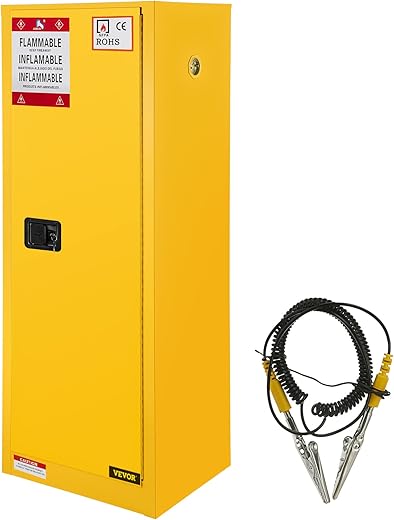








Understanding Gas Cabinets: A Comprehensive Guide
Gas cabinets are specialized storage units designed to safely contain hazardous gases used in various industries, including laboratories, manufacturing, and healthcare. If you’ve ever wandered through a lab or a manufacturing facility, you might have spotted these sturdy, often brightly colored cabinets that seem to stand guard over potentially harmful substances. But what exactly are gas cabinets, and why are they so crucial in ensuring safety? Let’s dive into the details.
What is a Gas Cabinet?
A gas cabinet is essentially a heavy-duty storage solution engineered to house gases under pressure. These cabinets are constructed from robust materials like steel and are designed to withstand a range of environmental conditions. They come equipped with various features such as ventilation systems, alarms, and fire suppression mechanisms to mitigate risks associated with gas leaks or other hazardous events.
Think of a gas cabinet as a secure fortress for volatile substances. Just as a fortress protects its inhabitants from external threats, a gas cabinet safeguards people and the environment from the dangers posed by hazardous gases.
The Importance of Gas Cabinets
Why should you care about gas cabinets? The implications of improper gas storage can be dire. For instance, gases can be toxic, flammable, or even explosive. A gas cabinet acts as a first line of defense, minimizing the risk of exposure and accidents. It’s similar to how a fire blanket protects you from flames; a gas cabinet protects you from the unseen threats of hazardous gases.
Moreover, regulatory compliance is a huge factor. Many industries face strict guidelines governing the storage of hazardous materials. Gas cabinets help organizations meet these regulations and avoid hefty fines or legal repercussions.
Key Features of Gas Cabinets
When shopping for a gas cabinet, there are several essential features to consider:
1. **Material Construction**: Typically, gas cabinets are made from heavy-duty steel, which provides durability and resistance to impact.
2. **Ventilation**: Proper ventilation is critical. Gas cabinets often include exhaust systems to disperse hazardous fumes, ensuring a safer environment.
3. **Security**: Lockable doors and restricted access are standard features, preventing unauthorized personnel from accessing dangerous gases.
4. **Alarm Systems**: Many cabinets are equipped with alarms that trigger if gas levels exceed safe thresholds, alerting personnel to potential hazards immediately.
5. **Fire Suppression Systems**: Some advanced models include built-in fire suppression features, which can be a lifesaver in an emergency.
Choosing the Right Gas Cabinet
Selecting the right gas cabinet can feel overwhelming, but it doesn’t have to be. Here are a few tips to guide you:
– **Assess Your Needs**: Consider the types and quantities of gases you need to store. Different gases have different requirements.
– **Check Compliance**: Ensure that the cabinet meets all relevant safety and regulatory standards.
– **Evaluate Space**: Measure the area where you plan to install the cabinet. You want a snug fit, not an awkward squeeze.
– **Consider Accessibility**: Think about how often you’ll need to access the gases. Choose a cabinet that balances security with ease of access.
Installation and Maintenance
Installing a gas cabinet isn’t just about plopping it down in a corner and calling it a day. Proper installation is critical for safety and compliance. It’s advisable to consult with professionals who specialize in hazardous material storage. They can ensure that the cabinet is installed in accordance with local regulations and best practices.
Once installed, regular maintenance is key. This includes checking the integrity of the cabinet, ensuring ventilation systems are functioning, and testing alarm systems. Neglecting maintenance can turn a safety feature into a ticking time bomb.
Conclusion
In summary, gas cabinets play an indispensable role in the safe storage of hazardous gases. They offer crucial protection for workers, the environment, and your organization from the potential dangers associated with these substances. By understanding the features, importance, and proper maintenance of gas cabinets, you can make informed decisions that prioritize safety and compliance in your operational environment.
FAQs
1. What types of gases are typically stored in gas cabinets?
Gas cabinets can store a variety of hazardous gases, including but not limited to, toxic gases like chlorine and ammonia, flammable gases like propane and hydrogen, and inert gases like nitrogen.
2. Are gas cabinets required by law?
Yes, in many jurisdictions, gas cabinets are required for the storage of hazardous gases to comply with local, state, and federal regulations. Always check your local regulations for specific requirements.
3. Can I install a gas cabinet myself?
While it may be tempting to save on installation costs, it’s highly recommended to hire professionals. Proper installation is crucial for safety and compliance with regulations.
